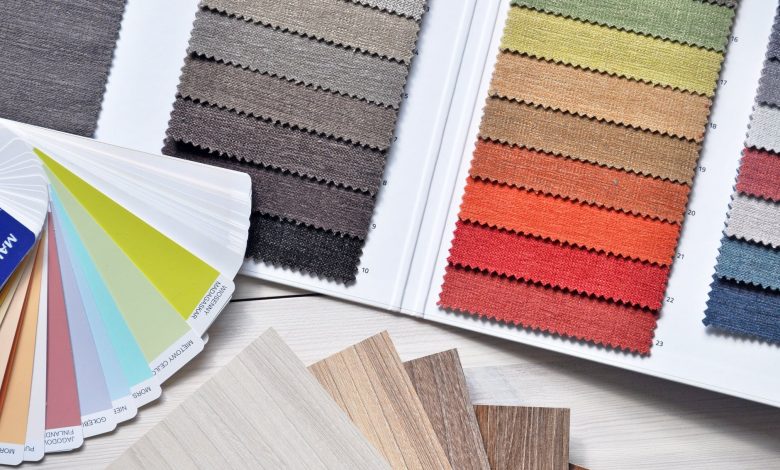9 Struggles Most Interior Designers Face

Owning and running a business is difficult. You can plan and execute everything flawlessly, but unexpected challenges will always arise. What separates the good companies from the bad is how you overcome the obstacles.
Whether you’re dreaming of becoming an interior designer or are well on your way there, you’ve probably already heard that it’s no walk in the park. But you can get a step ahead by learning from the experiences of others, so here are nine struggles most interior designers face.
1. Time Management
Good time management is essential for the function of any business. Whether you’re working alone or have multiple employees, you must organize your time so that everything gets done.
Make sure you prioritize projects. The projects with the shortest timeline take the front seat while your long-term projects can sit in the queue. This will help to ensure that everything gets done on time.
You need to be able to meet the needs of both contractors and employees. Scheduling office hours gives you time to plan projects and make yourself available.
Yet, of all the priorities you’ll be juggling, the biggest one is yourself. Finding time every day to take a break is essential for your mental health and the wellbeing of your business. A healthy business requires a healthy you!
End to End Interior designs Solutions – By top Interior Designers in Hyderabad
2. Selling Your Ideas
One of the most difficult parts of working as an interior designer is getting your ideas across clearly to clients. Unfortunately, there’s no way to project images of what you imagine in your head. Further, creating detailed models for every project is time-consuming — so you have to get creative.
Usually, all you have to work with is a floor plan or pictures when presenting your ideas. If at all possible, get in the actual building with your clients and walk them through your thoughts in as much detail as possible.
Use mood boards, fabric samples, and sketches whenever possible. This will show them (if nothing else) that you’re passionate about their project and that you know what you’re doing!
Top 6 Office Interior Designers in Noida Delhi NCR
3. Handling the Books
As an interior designer, you’re not just a business owner. On top of creating ideas for projects and acting as a manager, you’ll need to handle the financial books.
That includes everything: materials, labor, marketing, etc.
This also falls under time management since you’ll need to make time to balance your books regularly.
Costs can add up quickly, and keeping detailed books on top of your massive to-do list will be challenging. One of the best ways to stay on top of things is to record every expense in a journal. Keep your receipts in a centralized place, and balance the books every week!
4. Keeping up With Trends
As if doing everything mentioned above already isn’t enough, you’ll have to keep up with trends as well. Like fashion, different things come and go in and out of style in a constant, rapid flow of change. It’s your job to keep with the trends.
Stay up to date through trade magazines and shows. You can do this in your free time, or you can schedule it. Since interior design is your passion, you might even find it relaxing. Nonetheless, it needs doing.
You don’t want to present design ideas that went out of style. Imagine how embarrassing it would be for a client to call you out on something like that since you’re supposed to be the expert!
5. Exceeding Client Expectations
Many clients will have unrealistic expectations, and that’s just because they don’t understand the business the way you do. Make sure you set boundaries and stick to their budget.
Educate them on what they can expect based on their budget and timeline, and make it your mission to exceed those expectations.
6. Staying on Top of Fast Turnarounds
We mentioned earlier that time management is crucial, and staying on top of fast turnarounds is one of the main reasons why. Sometimes a client might want a project finished in a week or two. In some cases, you can reason with them, extending the deadline, but in other cases, you just have to buckle down and get it done!
7. Maintaining Cash Flow
Cash flow is vital in this business. You might need money just to get a project off the ground. This is why you should require a deposit upfront to acquire materials and workers.
Some clients will be hesitant to pay a deposit, but it’s essential because it safeguards you against clients who never pay their invoices.
8. Marketing and Self-Promotion
Social media is an ocean of white noise when it comes to marketing and advertisements, so standing out is crucial. You can use marketing strategies to get your ads in front of a niche audience, but if your content isn’t good, you won’t win their interest.
Do some research to see how other designers are handling promotion.
Do they post every day? Do they have a blog? Are their design ideas similar to yours?
Hiring a professional photographer or purchasing a nice camera for your firm can help to set your ads apart from the crowd. Make sure you learn as much as you can from other successful firms, using what works and putting your own style into it.
9. Finding the Right Partners
One sad reality in construction and interior design is that not all contractors are reliable. Many cut corners, hire inexperienced workers, and extend deadlines to get more money out of you.
So whether they’re contractors, partners, or employees, you need to find people who are just as dedicated to the quality of their work as you are to yours.
Conclusion
Working as an interior designer isn’t without its own unique challenges.
Exceed client expectations by:
- Staying ahead of the game
- Managing your time well
- Working with the right people
- Staying on top of trends and finances
This will undoubtedly make your interior design business a success!
Author bio:
Caitlin Sinclair is the Property Manager at Evolve South Bay with five years of property management experience and many more in Customer Service. She shares her passion for her community and looks forward to making Evolve South Bay the place to call home.




